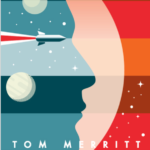Some people get enough TV without cable. Whether Britbox is a failure or genius. What’s coming to Hulu’s live service. With special guests Amos Lemos and Kent Fellure from Ritual Misery.
Download audio
Download video
CordKillers: Ep. 161 Bigger Than a Britbox
Recorded: March 13, 2017
Guest: Amos Lemos and Kent Fellure
Intro Video
Primary Target
How to Watch
- British TV streaming service BritBox launches in U.S.
– BritBox $6.99 a month
– Classic TV and currently airing in UK
– BBC Worldwide and ITV (AMC)
– Web, Apple TV, iPhone, iPad and Android (Roku and Chromecast coming soon)
-Premieres
– Cold Feet, New Blood, Silent Witness. (1 day or more after airing in UK)
– Classics
– Blackadder, The Office, Are You Being Served, AbFab, Upstairs Downstairs, Fawlty Towers
What to Watch
What We’re Watching
- Brian: Justified 509, The Expanse 207, “Breaking Bad Movie”, Stanley Kubrick’s Boxes
- Tom: Justified (509), The Expanse (207) , Star Wars: Rebels, The Magicians
- Amos: The Sixties, The Seventies, The Eighties, The Man in the High Castle
- Kent: Star Wars: Rebels, The OA
- On the Lookout: Colony
Front Lines
- Sling TV expands access to its Cloud DVR, as streaming TV competition heats up
– Sling TV brought its cloud DVR feature to Fire TV and began charging $5 a month for 50 hours of storage. Not all channels can be recorded. Roku beta testers will not be charged and get 100 hours. New testers have to have an Amazon device to get into the “First Look” beta program, but once in the users can also access the DVR on Android as well as Roku.
- DirecTV Now is giving early subscribers a free year of HBO
– DirecTV Now is giving its early adopters HBO access free for a year. If you signed up to DirecTV Now before March 6th you should have access to HBO now.
- Nintendo says Netflix, Hulu, and Amazon video ‘will come in time’ to the Switch
– Nintendo America head Reggie Fils-Aime told the Washington Post that Nintendo is talking to a number of companies about bringing services to the Nintendo Switch, “companies like Netflix, Hulu, Amazon — things that will come in time.” But Fils-Aime stressed that how you play and what games you can play will continue to be Nintendo’s focus.
- Hulu adds A&E, History and Viceland to its live TV lineup
– Hulu announced Friday that A&E networks will be available as part of its live TV service when it launches later this year. That includes A&E, History, Lifetime and Viceland. However, Bloomberg reports Viacom may be backing out of a deal with Hulu. CBS, Fox, Disney and Time Warner channels are expected to be available at launch.
- Facebook will stream live MLS soccer matches this season
– Facebook signed a deal with Univision to stream 22 Major League Soccer matches in 2017. There will also be 40 Matchday Live analysis shows exclusively on Facebook. The first match available on Facebook will be Chicago Fire at Atlanta United FC at 4PM ET on March 18th. Facebook has a deal with Liga MX and is reportedly in talks with Major League Baseball.
Dispatches from the Front
Hey Tom, Brian and Bryce,
I am forwarding this link to an article that extols the virtues of the new ATSC 3.0 digital over the air broadcast standard. From what I see it could be very beneficial for cordkillers. The broadcast signal is going to be stronger and have adaptable frequencies that can travel farther from the source and penetrate deeper into the home for much better reception. You will also be able to get a receiver box for the signal that can be hooked up to your home network so you can distribute it throughout the house from one source. The new standard will also allow broadcasters to deliver their signal to targeted areas for specific purposes. Portable devices such as smartphones and or tablets will also be able to receive the signal.
– Cliff
Hello Cordkillers
Just wanted to drop a note saying we signed up for YouTube Red explicitly for no commercials and YouTube Red originals. We always use the YouTube Music app and I have a teenager so we had to get access to the Dan and Phil Live Tour content that is exclusively on Red. To be honest, I’m so used to YouTube not having commercials now I forget people get ads and get very angry when I see one because I forgot to login.
Thanks for the great show!
– Dominic
Brian,
I am one of those people that loves my YouTube Red subscription. How can you not love not seeing ads?
Some background: Our primary source of content for our Living Room TV is YouTube. Last summer, I was getting really annoyed with YouTube showing me ads for R-rated horror movies on the TV. While they were actually relevant to my interests, my 6 year old daughter was watching with me most of the time! And I really didn’t want a separate account for the TV. Right about then, YouTube offered me Red for the entire summer for $3, so I jumped on it, and just kept it after the three months were up. Can’t imagine going back to ad infested YouTube.
Amusingly my experience is opposite of Tom’s: I HATE GOOLE PLAY MUSIC! I used the Google Play Music App with my own (legit purchased) music before getting Red, and really liked it. Now the voice search is useless: There’s no way to tell it to play *my* music, and instead it’s bound and determined to stream! Meaning when I ask for a song by The Returners while driving home from work, suddenly I’m listening to Frank Sinatra! Even though the song I want is on my phone! Even if you tell it use downloaded songs only, it turns that feature off the moment you voice search.
Honestly if I could get Red without Google Play Music, I’d take that in a heartbeat.
– Chris
Long time listener, Ben, here. I’m a software engineer by profession and recently have heard more and more of my co-workers are using Android/Kodi boxes to access day-of movies and to stream any shows they want for free. We all know doing this is illegal (I’m not a lawyer of course) but I was wondering if you guys could lay down some facts for these wayward coworkers for me?
Their argument for doing this seems to hinge on 2 insane points:
1. It doesn’t say it’s illegal to do this like it does at the beginning of DVDs/Blurays.
2. Streaming isn’t the same as downloading, and is therefore legal.
I know I’ve read recent articles about some re-sellers of “fully loaded” Kodi boxes in the UK getting into trouble with the law, but I’d really appreciate it if you could scare straight the folks that think it’s Ok to steal.
Keep up the great work on the show, and thanks.
Your boss,
– Ben
“I was inspired by a recent emailer’s Chicken Challenge result with his DIRECTV account. I have the HD Genie DVR with two additional miniGenies and pay $150 a month.
I anticipated having no DIRECTV for the weekend but the chance of saving a good chunk of change outweighed the possibility of missing the next The Walking Dead, if I had to wait for customer retention to call back in a day or two.
I got a regular service rep and I explained that, based on my viewing habits, I could buy the shows I wanted to watch and it would be much cheaper than my $150 a month bill, so please cancel my account. Between you and me, I hadn’t looked at a single price comparison.
The rep offered to reduce my bill to $106 a month but I said that was still too high and to please cancel the account. He quickly came back to me with a price of $86 a month for the next year and could throw in a special they were running where I’d get HBO, Showtime, and Cinemax for 6 months with no need to cancel when the time was up. (I declined the free sportsball package as no one in our house watches sports.) I felt that was quite fair for the package and equipment and “”reluctantly”” accepted his offer, saving me about $65 a month.
Onward, Chicken Challengers!
Keep the great work!
– Chris
Links
2016 Winter Movie Draft
patreon.com/cordkillers
 PS4 games come to PS Now, Tag Heuer’s $1,650 smartwatch, Microsoft Teams launches for Office 365.
PS4 games come to PS Now, Tag Heuer’s $1,650 smartwatch, Microsoft Teams launches for Office 365. 1839 – Sir John Herschel
1839 – Sir John Herschel 
 Saturday March 18 at 4 PM,
Saturday March 18 at 4 PM,  Intel buys Mobileye, Google shows off a Levi’s smart jacket, Pandora launches its on-demand music service.
Intel buys Mobileye, Google shows off a Levi’s smart jacket, Pandora launches its on-demand music service.